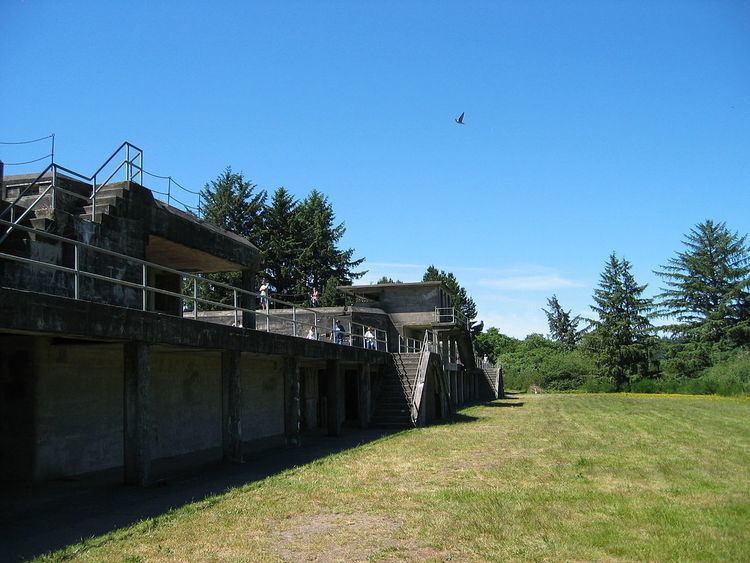Type Military base Built 1863 Materials Concrete, steel Opened 1863 Phone +1 503-861-3170 | Condition Preserved In use 1863-1947 Area 219 ha Added to NRHP 22 September 1971 | |
 | ||
Hours Closed now Tuesday10AM–6PMWednesday10AM–6PMThursday10AM–6PMFriday10AM–6PMSaturday10AM–6PMSunday10AM–6PMMonday10AM–6PM Similar Peter Iredale, Fort Clatsop, Lewis and Clark National, Cape Disappointment State Park, Astoria Column | ||
Fort Stevens was an American military installation that guarded the mouth of the Columbia River in the state of Oregon. Built near the end of the American Civil War, it was named for a slain Civil War general and former Washington Territory governor, Isaac Stevens. The fort was an active military reservation from 1863–1947. It is now listed on the National Register of Historic Places.
Contents
Civil War
The fort was constructed in 1863-64 during the Civil War as an earthwork battery on the south shore of the mouth of the Columbia River, and was known as the Fort at Point Adams. It was later Fort Stevens in 1865, in honor of the former territorial governor of Washington, Isaac I. Stevens who had been killed in action. Fort Stevens was the primary military installation in what became the Three Fort Harbor Defense System at the mouth of the Columbia River. The other forts were the Post at Cape Disappointment, later Fort Cape Disappointment and later Fort Canby, built at the same time as Fort Stevens, and Fort Columbia, built between 1896 and 1904. Both are on the Washington side of the river. The fort was meant to defend the mouth of the Columbia from potential British attack during the Pig War of 1859 and subsequent ongoing regional tensions through 1870 in the San Juan Islands, and was important during the 1896-1903 Alaska Boundary Dispute, when British-American tensions again were and the two countries were on the brink of war.
Peter Iredale
In 1906, the crew of the sailing ship Peter Iredale took refuge at Fort Stevens, after she ran aground on Clatsop Spit. The wreck is visible today, within the boundaries of Fort Stevens State Park.
World War II
On the night of 21–22 June 1942, the Japanese submarine I-25 surfaced off Fort Stevens and fired 17 shells from her deck gun, making Fort Stevens the only military installation in the continental United States to come under enemy fire in World War II. (The Ellwood Oil Field near Santa Barbara, California which had been shelled earlier by a Japanese submarine was not a military post.) The Japanese attack caused no damage to the fort itself, only the backstop of the post's baseball field being destroyed. Fort Stevens was decommissioned in 1947. All the armaments were removed and buildings were auctioned. The grounds were transferred to the Corps of Engineers, until finally being turned over to the Oregon Parks and Recreation Department.
State park
Much of Fort Stevens is preserved within Fort Stevens State Park, part of the Lewis and Clark National and State Historical Parks. The 3,700 acres (15 km2) park includes camping, beach access, swimming at Coffenbury Lake, trails, and a military history museum.
